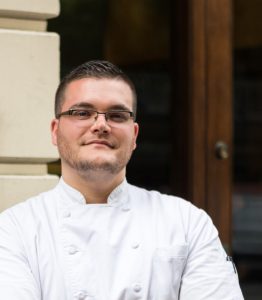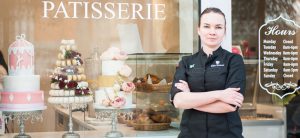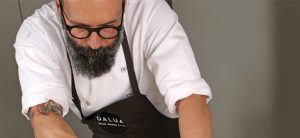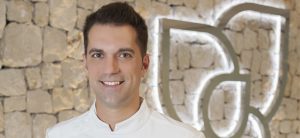Joshua Gaulin: “Showcase the product you are working with”
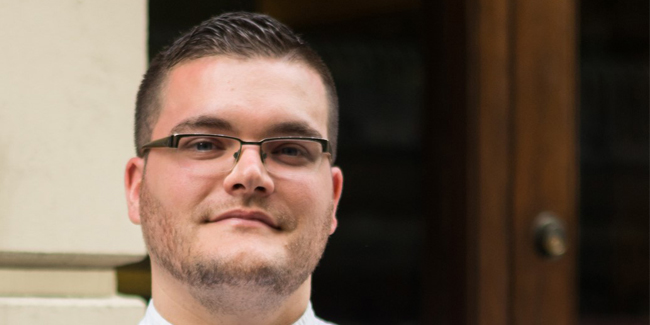
Nothing can beat Northern California in terms of fresh produce, technological advancements, and cultural diversity. What happens in San Francisco echoes around the rest of the country making products a trend or a must-have or to try. The city has an undeniable dining reputation. Here you can find some of the best restaurants from around the world, making this a Mecca for food lovers, restaurateurs, critics, and the so-called “Foodies”. During my last visit to San Francisco, I had the chance to dine at the restaurant, Quince.
Quince is run and operated by chef & owner Michael Tusk. This is one of the few restaurants in the U.S. to hold three Michelin stars over the years. Chef Tusk is a culinary institution himself, having lived over 30 years in the Bay Area, developing relationships with farmers and chefs, and running and owning other restaurants in the city for years. He has become an institution when it comes to fine dining in the city. I was fascinated by the art collection inside the restaurant, everything was well-balanced between light, decor, service, and most importantly, the food. I had the tasting menu with wine pairings. It was a remarkable experience from the first course to the petit fours at the end of the meal.
Restaurant business opportunities are endless in San Francisco and that has attracted many young chefs to move to the city. Joshua Gaulin, the young and talented pastry chef originally from Richmond, Virginia, moved to the area ten years ago. He tells us about his up and coming career as a chef, and what it was like to move from a small town to the culinary big leagues, pursuing his dream of becoming the pastry chef of one of the best restaurants in the country.
We change the menu pretty often, prioritizing our farm, showcasing and respecting the nature of the products
Tell us about your upbringing. What was your childhood like? And at what age and why did you start working in restaurants?
I grew up in the suburbs of Richmond, Virginia, not much of a culinary environment there. Growing up in the 80s and 90s fast food was a la mode. Having four distinct seasons exposed me to seasonality and flavors. Here in California we can grow anything all year round.
All my family comes from a medical background, I am the only adventurer that pursued a career in the culinary arts.
Why? A need for money honestly. I started at the age of 14 at the bottom, washing dishes and developing a love for restaurants. One of my first jobs was at a local pizzeria called Sergios. That was my very first job.
When did you decide to become a chef?
I didn’t go to culinary school, I decided to continue working in the culinary field so I started working at The Commonwealth Club, in Richmond, a private gentlemen’s club founded in 1891. This historic building is home to a diverse membership. Its members, including leaders in business, politics, education, and society enjoy the comforts of the elegant clubhouse and its relaxed atmosphere of Southern grace. This was my first real culinary job, run by Executive chef Kaui Stryhn. I enjoyed working in the savory side as the chef kept me very engaged. I learned many techniques, cooking methods, organization, and mise en place. Chef Kaui Stryhn sent me to practice in different restaurants, he bought me knives, whenever we were not busy the chef would test me with mystery basket ingredients to create and develop new things. He was very instrumental in my role as a professional chef.
In 2011 I landed in the kitchen of renowned chef & owner Dale Reitzer from Acacia Restaurant in Richmond. At the time the chef and the restaurant had been recognized with prestigious awards: James Beard Nominated Best Restaurant, Food & Wine Best New Chef, just to name a few! “Hands Down the Best Restaurant in Town”.
I was interviewed to take a savory position and the pastry chef was leaving shortly after I joined the team. I really liked the way he worked, he was organized and clean, I spent a lot of time with him learning from him, started doing all the mise en place and chef Dale gave me the opportunity of a lifetime. I took the position and I fell in love with it. And I haven’t really looked back since. Shortly after I won The Pastry Chef of the Year award.
Where did you go next?
I was at Acacia for over a year. I honestly had no idea what I was doing, I ate around town as much as I could, there was no place to learn or pursue pastry.
I knew I wanted to go to New York or California, so I decided to go to California where I ate around many places but what blew me away was the restaurant at Meadowood in St. Helena. I had never been exposed to food like that. Shortly after my visit I started sending emails to try to get a job there.
The pastry chef at the time was Boris Portnoy. He was the right person to learn from, Chef Boris had spent time in Spain to further his understanding of avant garde techniques and philosophies behind the country’s molecular movement. Portnoy worked at Restaurant Mugaritz with renowned chef Andoni Aduriz outside of San Sebastian. where he learned about the application of modern techniques and a range of tastes.
I finally got a response from Chef Boris Portnoy to be part of the team and I moved to California.
“Coming from a small town and moving into the big leagues wasn’t easy. I think just being in a three Michelin star kitchen is very intimidating at first”
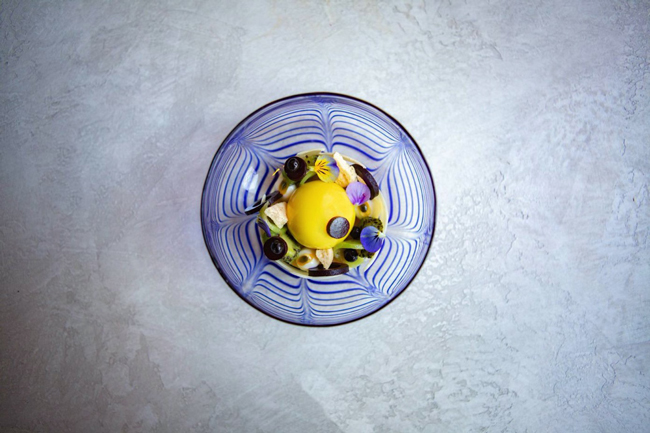
Tell us about the challenges you faced when you moved away to pursue your dream to work in the big leagues?
For sure there is hesitation, especially coming from a small market, it’s hard to leave everything you know but I think it was exciting. I was ready to move on and start living the dream.
Coming from a small town and moving into the big leagues wasn’t easy. I think just being in a three Michelin star kitchen is very intimidating at first. The discipline, organization, and pride speak for itself, where working with people from all over the world tells you about the professionalism of the staff whereas in Richmond, Virginia everyone is a local kid.
Going to a restaurant where everyone working there is there to pursue something great and there is not much room for error so that was the biggest learning curve: It either breaks you quickly or opens your eyes to what food can be and what the potential of fine dining can be.
What happened after The Restaurant at Meadowood and why did you leave?
Shortly after chef Boris Portnoy left, the new pastry chef arrived. I really liked Chef Daniel Ryan, I worked with him for over a year. I really liked spending time in the city, I love the city life, Napa is great and I’m thinking of retiring there one day. But I wanted to be closer to the city, at the time I was 25 and I always wanted to move.
“When I think about desserts, I think about creating a harmonious meal where the transition from savory to sweet makes sense. We try not to repeat ingredients”
Tell us about your restaurant experience when you moved to the city of San Francisco?
I applied to be a pastry chef for the Michael Mina Restaurant. Michael Mina and sommelier Rajat Parr were about to open the French-inspired restaurant called NR74, a casual counterpart for the other Michael Mina Restaurant. The chef in charge of the hiring and opening was Chef Adam Sobel, he intercepted my resume and offered me the pastry chef position.
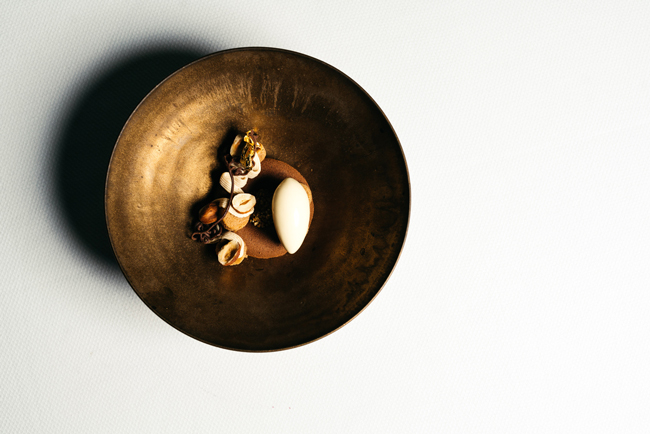
Why move from a three-Michelin restaurant to a regular everyday restaurant?
For me it was tough, I honestly wanted to stay in fine dining. When chef Adam Sobel intercepted my resume, I just had a good conversation with him and he had a very similar background.
He really wanted to come on his own. I really liked his vision of what he wanted to pursue so I took it on as my own challenge to try to develop my own food and see what my own style was and I learned a lot. It was a very hard decision but it also opened doors to the city.
It was nice to have someone you know. He helped me get settled in the city and shortly after Chef Adam Sobel left to take a corporate position and it was great for me because I could experiment with things and figure out my style of food. But at the same time, I really missed the fine dining caliber of food.
Before I took the job at NR74, I had a stage at Restaurant Saison with pastry chef Shawn Gawle. I always wanted to work for him when I moved to the city. I got a position to work with him at Saison but he was leaving and they were minimizing the pastry program. So the NR74 project made more sense to me at the time.
I stayed in touch with Chef Shawn, and while working at NR74 he moved to be the pastry chef at Quince Restaurant. He needed a sub-chef and that’s when I started working here.
I worked with Chef Shawn over two years, until I got a job offer to become the Executive Pastry Chef for the restaurant Michael Mina (1 Michelin Star) and I left Quince and a year after I left, I received a call from chef & owner of Quince Restaurant Michael Tusk telling me that Chef Shawn left last January and he was calling me to see if I was interested in taking over the pastry program. Shawn left Quince shortly after I did, and there was a pastry chef names yannick that was at the helm at Quince for a little over a year between shawn and myself, who decided to leave, thus making the vacancy that I ultimately came to fill. That was an offer that I couldn’t turn down.
“Chef Michaele Tusk is very involved, he is the hardest working person in the business. He pushes you to the limit, constantly pushing you to become better at your job… He is one of the most accommodating chefs I know, he will accommodate any menu for any allergy”
Describe your relationship with Chef Michale Tusk and how involved he is when it comes to creating new desserts for Quince.
He is very involved, he is the hardest working person in the business. He pushes you to the limit, constantly pushing you to become better at your job. I mean we are here sometimes 12 to 14 days in a row with two tasting menus. He is one of the most accommodating chefs I know, he will accommodate any menu for any allergy. We have two desserts per tasting menu and a few extra things. Coming from a restaurant like Michael Mina, where I really respect what he does, but he owns a vast enterprise of restaurants at this point.
Having a chef who’s physically here every day is very nice. He is an institution in the Bay area, for more than 30 years chef Tusk has cultivated relationships with all these farmers. We have our own farmers market but we still go to four other ones every week. Our kitchen staff is about 30 people, nine of them work in pastry with two sub-chefs, we also do the pastries for Verjus and have a separate pastry team for Cotogna, the casual dining bar next door.
“We just use what is great and fresh. We change the menu pretty often, prioritizing our farm, showcasing and respecting the nature of the products we can get trying to reduce the carbon footprint as much as possible by recycling, composting, and creating new techniques to use and transform food to minimize food waste.”
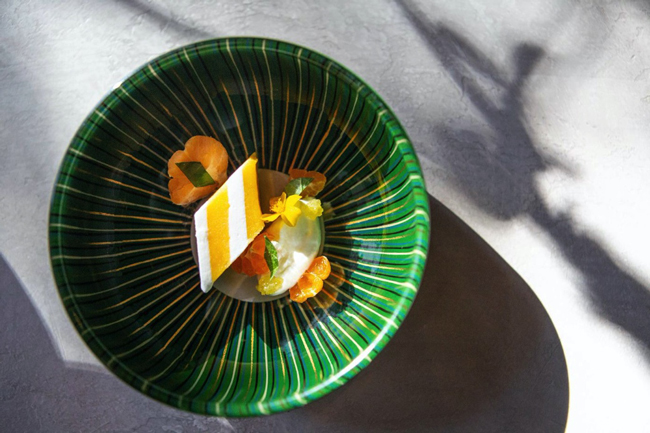
When it comes to creating something new for the menu where do you get your inspiration and what is your style and approach?
Sometimes when you go to a restaurant of this level, your meal and dessert don’t marry well, it’s like you are in two different restaurants.
I like to keep in the line of the style of the restaurant, blending different styles. I like to balance between modern and classic. I feel if you try to be too modern or too classic it can go wrong. For me it is a matter of showcasing finesse and technique, but the most important thing when it comes to creating a dessert is to showcase the product you are working with. When I think about desserts I think of creating a harmonious meal where the transition from savory to sweet makes sense. We try to not repeat ingredients in our menu: we have things coming in the door to inspire us to create every day. It takes a strong collaborative effort between Chef Tusk, Chef Niel Stetz (chef de cuisine), and me.
We just use what is great and fresh. We change the menu pretty often, prioritizing our farm, showcasing and respecting the nature of the products we can get trying to reduce the carbon footprint as much as possible by recycling, composting, and creating new techniques to use and transform food to minimize food waste.
What makes Chef Michael Tusk happy?
Let me give you an example of what makes chef Tusk happy: When I see something at the farmers market like let’s say “grapes”, the next day he will bring other grapes and together we come up with something delicious! Chef Tusk knows what he likes, it is very engaging to get the first of things, when someone produces something we like, we will talk to the farm and get the whole product.
In Bolinas, we have our own farm called Fresh Run Farm where they grow exclusively for us. We are now venturing into making our own dairy products. It is really expanding and taking on a life of its own.
Besides the farmers, we have a liaison with other farmers. They send us a list of what is great and what is coming up for the next season. It is incredibly helpful to have that foresight. It really helps when you work in a restaurant of this caliber that the chef has built these relationships with the farms for more than 30 years so we get really great products and priority. I know in Northern California there is no shortage of great produce, but to have the top tier of these things and a chef who spares no expense to get the best of everything is great.
